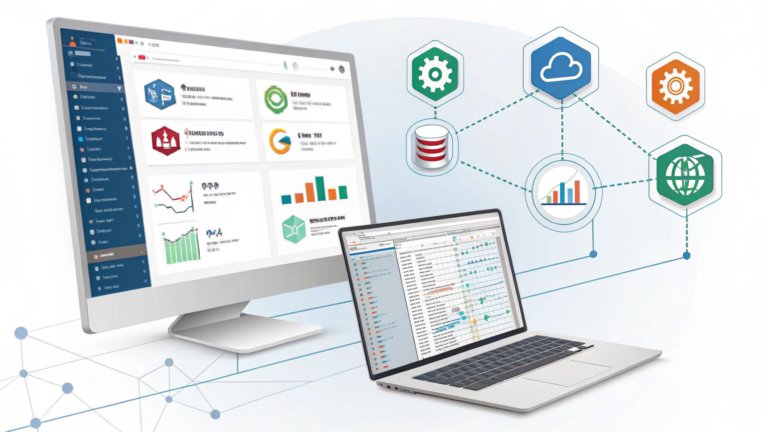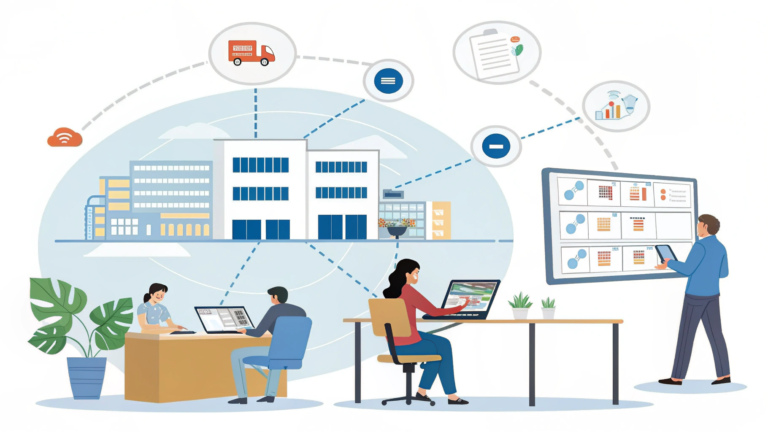
In the modern business landscape, environmental sustainability is no longer just a buzzword; it’s a necessity. Companies are under increasing pressure from stakeholders—ranging from consumers and investors to regulatory bodies—to minimize their environmental impact and contribute to broader sustainability goals. Achieving these environmental goals requires comprehensive strategies, accurate data tracking, and transparent reporting, all of which can be supported by best sustainability reporting software.
Environmental, Social, and Governance (ESG) management software is a tool designed to help organizations manage their ESG data, track their sustainability performance, and ensure compliance with environmental standards and regulations. In this article, we’ll explore how ESG management software plays a crucial role in helping businesses meet their environmental objectives, driving efficiency, and enabling accountability.
1. Tracking and Monitoring Environmental Impact
One of the primary functions of ESG management software is to help businesses monitor and track their environmental impact. This includes the measurement of various key performance indicators (KPIs) related to environmental sustainability, such as:
- Carbon Emissions: Monitoring greenhouse gas emissions is a key component of environmental goals, especially with growing global attention on climate change. ESG management software can track emissions from energy use, transportation, waste, and other sources to help organizations understand their carbon footprint.
- Energy Consumption: Reducing energy consumption is essential for minimizing environmental impact. ESG software tracks energy usage across facilities and departments, helping companies identify areas where energy efficiency can be improved.
- Waste Management: Businesses are under pressure to reduce waste and increase recycling. ESG management software can track waste generation and disposal methods, helping organizations work toward zero-waste goals and improve their waste management strategies.
- Water Usage: Monitoring water consumption is crucial for sustainability, particularly in water-scarce regions. ESG management software helps track water usage and identify opportunities for conservation.
By providing real-time access to these environmental data points, ESG management software allows businesses to gain a comprehensive view of their environmental performance. This data-driven approach helps businesses take proactive steps toward reducing their environmental impact and achieving sustainability targets.
2. Identifying and Mitigating Environmental Risks
In addition to tracking environmental performance, ESG management software is essential for identifying and mitigating environmental risks. These risks can arise from various sources, such as:
- Regulatory Changes: As governments implement more stringent environmental regulations, businesses must ensure they are compliant to avoid penalties. ESG software helps companies stay on top of regulatory changes and track compliance across multiple jurisdictions.
- Supply Chain Risks: A company’s supply chain may contribute significantly to its environmental footprint. ESG software helps monitor the environmental practices of suppliers, ensuring they align with the company’s sustainability goals and identifying areas where improvements are needed.
- Climate Change Risks: Extreme weather events and other climate-related risks can affect business operations. ESG management software helps assess climate risks and devise strategies for adapting to a changing environment, such as transitioning to renewable energy or investing in climate-resilient infrastructure.
By proactively identifying potential risks, businesses can take preventive measures to reduce their environmental impact and avoid disruptions to their operations. The ability to anticipate and mitigate risks is a crucial aspect of achieving long-term environmental sustainability.
3. Setting and Achieving Environmental Goals
Achieving environmental goals requires clear, measurable objectives. ESG management software provides businesses with the tools to set, track, and achieve these goals by providing a framework for establishing and monitoring performance metrics. Common environmental goals that can be tracked with ESG software include:
- Carbon Reduction Goals: Setting targets for reducing carbon emissions over time and tracking progress towards these targets.
- Energy Efficiency Goals: Establishing energy usage reduction targets and monitoring progress through detailed reports and dashboards.
- Sustainable Sourcing Goals: Tracking the percentage of materials or products sourced from sustainable sources or suppliers.
- Water Conservation Goals: Monitoring progress towards reducing water usage and promoting water efficiency.
With ESG management software, organizations can establish SMART (Specific, Measurable, Achievable, Relevant, and Time-bound) environmental goals. The software tracks performance in real-time and generates reports that highlight progress, enabling businesses to make data-driven decisions and adjust their strategies as needed.
Furthermore, ESG management software offers the capability to align environmental goals with broader corporate sustainability objectives, ensuring that the company’s efforts are cohesive and integrated across various ESG dimensions.
4. Reporting and Transparency
Transparency is a key principle of effective ESG management, especially when it comes to environmental goals. Stakeholders—including investors, customers, and regulatory bodies—demand accurate, up-to-date reports on a company’s environmental performance.
ESG management software streamlines the process of generating ESG reports by automating data collection, calculation, and presentation. This ensures that reports are not only accurate but also timely and aligned with international ESG reporting standards, such as:
- Global Reporting Initiative (GRI)
- Sustainability Accounting Standards Board (SASB)
- Task Force on Climate-related Financial Disclosures (TCFD)
With automated reporting features, ESG management software simplifies the process of creating comprehensive reports that meet regulatory requirements and help demonstrate corporate accountability. Real-time tracking and customizable reporting features enable companies to share progress on their environmental goals with external stakeholders, fostering trust and improving brand reputation.
5. Improving Operational Efficiency
Achieving environmental goals isn’t just about reducing a company’s ecological footprint—it’s also about improving operational efficiency. ESG management software plays a key role in identifying inefficiencies and recommending areas for improvement. By analyzing data on energy consumption, resource usage, waste management, and more, the software can uncover inefficiencies in the organization’s operations.
For example, if a company identifies high energy usage in certain facilities, ESG management software can pinpoint specific areas of waste, such as outdated equipment or inefficient processes. With this information, businesses can implement changes to reduce energy consumption, cut costs, and improve overall efficiency.
In addition to energy savings, ESG management software helps optimize other aspects of operations, such as waste reduction, resource allocation, and supply chain management. These efficiencies not only help achieve environmental goals but also lead to cost savings and increased profitability.
6. Engaging Employees and Stakeholders
An often-overlooked aspect of environmental sustainability is the role of employees and other stakeholders. Achieving environmental goals requires a collective effort, and ESG management software provides tools for engaging employees and ensuring they are aligned with the organization’s sustainability objectives.
Through dashboards, notifications, and gamification features, ESG management software can motivate employees to participate in sustainability initiatives, such as reducing energy consumption, promoting recycling, or participating in community environmental programs. The software can also provide real-time feedback on how individual and team actions contribute to achieving overall environmental goals.
Engaging employees and stakeholders is crucial for building a sustainable corporate culture and ensuring that environmental goals are integrated into every level of the organization.
Conclusion
ESG management software plays a critical role in helping organizations achieve their environmental goals. By providing tools for tracking and monitoring environmental impact, identifying and mitigating risks, setting measurable targets, improving operational efficiency, and promoting transparency, ESG software empowers businesses to take a data-driven approach to sustainability. As environmental concerns continue to shape the global business landscape, the ability to manage and optimize ESG performance will be key to long-term success. Adopting the right ESG management software not only helps businesses meet their environmental objectives but also enhances their reputation, fosters stakeholder trust, and supports a sustainable future.







